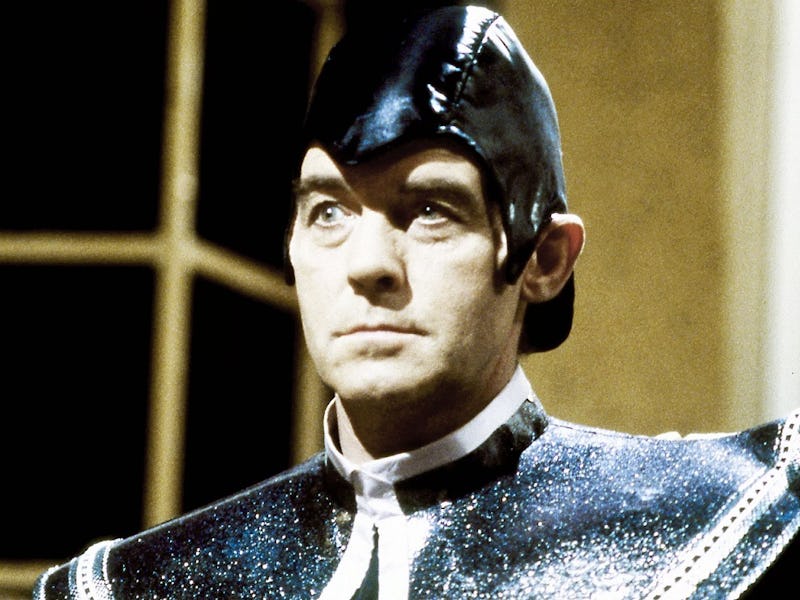Why 'Doctor Who' Should Reintroduce the Valeyard
The only foe more dangerous than the Master is and evil version of the Doctor.

If there is one nemesis that would be legitimately exciting for the incoming 13th Doctor to face in Doctor Who Season 11, it would be … the Doctor!
More specifically, that villain would be “The Valeyard,” a being the Master once described as “an amalgamation of the darker sides of the Doctor” that occurred sometime between the Doctor’s 12th and final incarnations.
Matt Smith fans might think this concept sounds remarkably similar to the Dream Lord from “Amy’s Choice,” in which Amy, Rory, and the Doctor are stuck inside two very different, equally deadly dreams. They’re tormented by the Dream Doctor, who turns out to be a projection of the Doctor’s own dark subconscious.
But the Valeyard is an actual, living villain that hasn’t been featured on Doctor Who in more than 30 years despite an extensive history in audio and prose. What better time to reintroduce a male, evil reflection of the Doctor than when he’s a she?
The Valeyard (Michael Jayston) was first introduced in the 14-part “Trial of a Time Lord” that aired back in 1986, which is also technically Season 23 of the Classic era. The 6th Doctor (Colin Baker) is tried by the High Council of Time Lords for breaking the laws of Gallifrey, which include interfering with outside worlds (the Doctor’s MO). The Valeyard is his prosecutor, and he manipulates evidence to frame the Doctor with the aim of stealing the Doctor’s regenerations.
Ridiculous paradoxes aside, in “The Name of the Doctor” Christmas special that led to the death of what fans refer to as the 11th Doctor, it was revealed that Matt Smith’s Doctor was actually the thirteenth incarnation. Out of the Doctor’s original regeneration cycle, the War Doctor counted as one, as did the 10th Doctor’s subverted regeneration that led to the creation of the Meta-Crisis Doctor. Thus, 11 was the 13th and “final” incarnation — that is, until Clara pleaded with the Time Lords to grant him a whole new cycle.
At one point during “Trial of a Time Lord,” the Valeyard also mentions that he was created when the 13th Doctor experimented in expanding his regeneration limit (more or less exactly what happened in “Time of the Doctor.”) But, you know, evil people tend to be liars, so it’s hard to tell what the Valeyard’s canon origins are.
The Doctor has known about the Valeyard for a long time, which is why, in the comic storyline “The Four Doctors,” the 10th Doctor actually accuses the 12th of being the Valeyard when the two team-up with the 11th and War Doctors to combat a slew of frequent Who enemies.
The Valeyard in all his arrogant glory.
What’s likely is that the Valeyard is a version of the Doctor that comes sometime after Jodie Whittaker’s 13th Doctor (who is actually the 15th — are you keeping up?). At one point, the term “penultimate” is used to describe which incarnation, which at this point could theoretically put the Valeyard as the 22nd Doctor of the far-off future. But the deeper fans dive into storylines from Doctor Who books, comics, and audio stories, the nature and origins of the Valeyard get more riddled with uncertainty and contradiction.
The Master (or Missy) often provides Doctor Who with an opportunity to see how an evil Time Lord might spend their time, but the Valeyard would let us get a glimpse at what a legitimately evil version of the Doctor would be like.
Recent seasons of Doctor Who have seen the recycling of villainous races like the Daleks, Cybermen, Weeping Angels, or Zygons — each of which has squared off against multiple Doctors in the modern era. Isn’t it about time that Doctor Who showed us something that could be both familiar and new?
Jodie Whittaker’s 13th Doctor will make her debut during the 2017 Doctor Who Christmas Special.